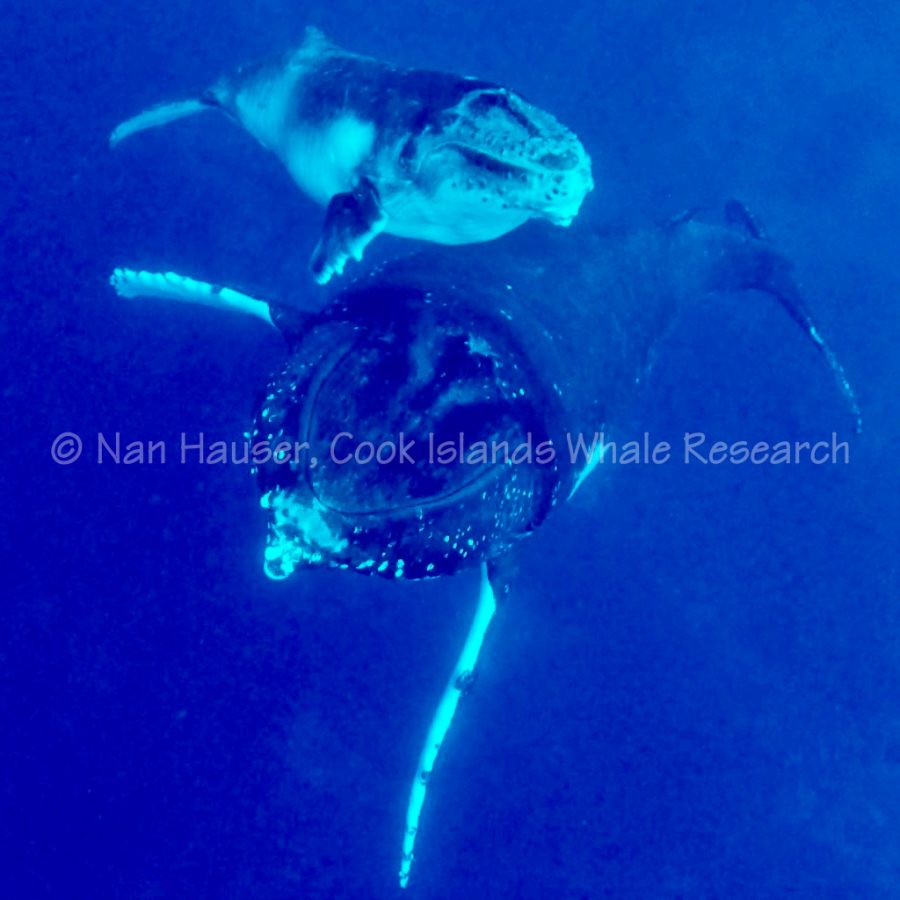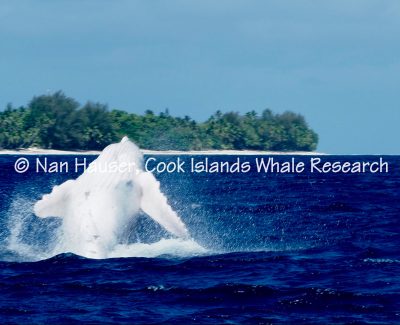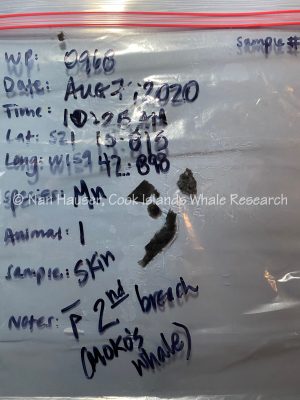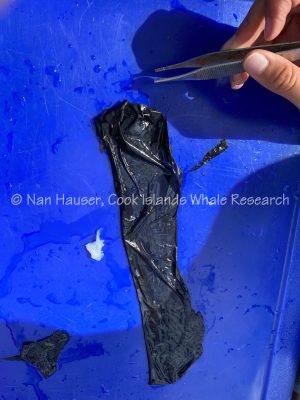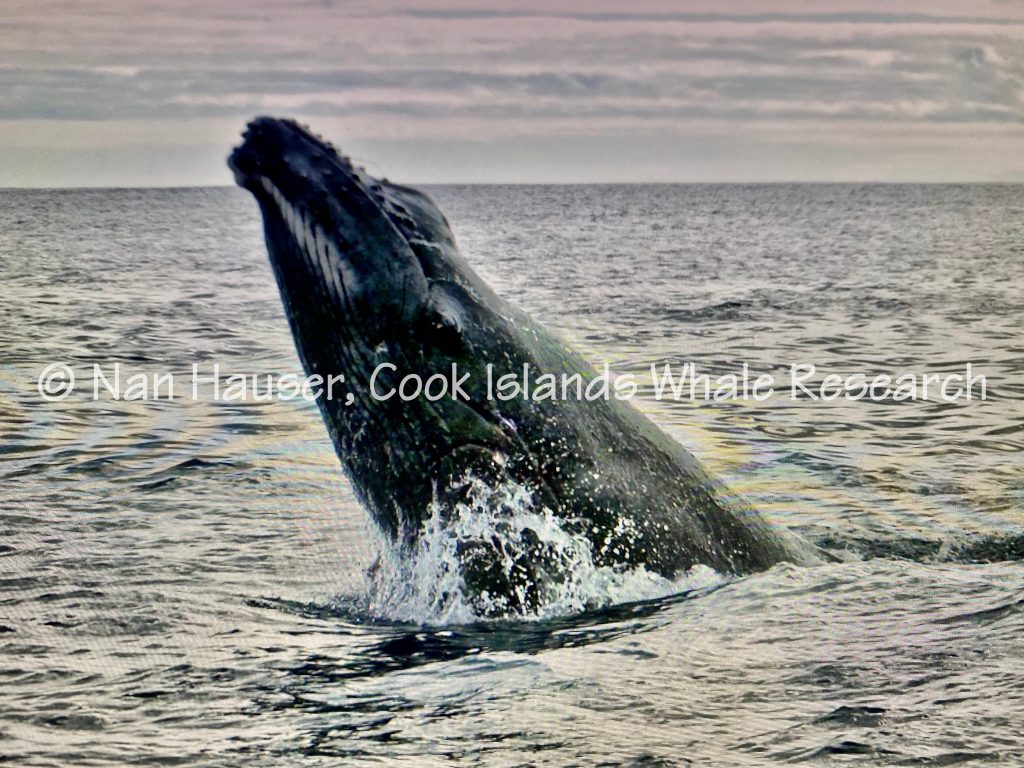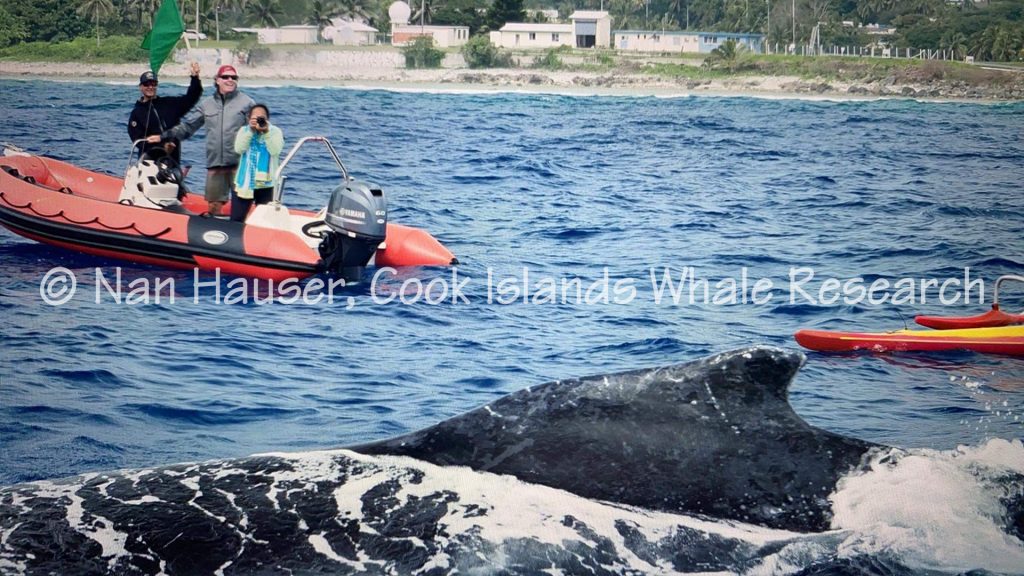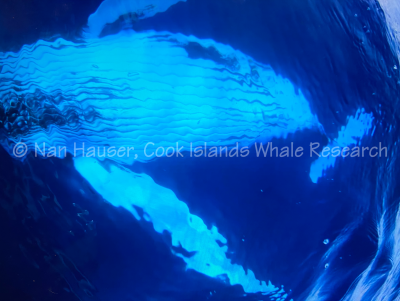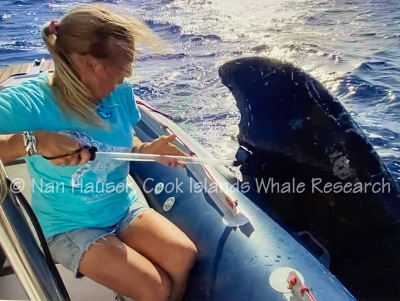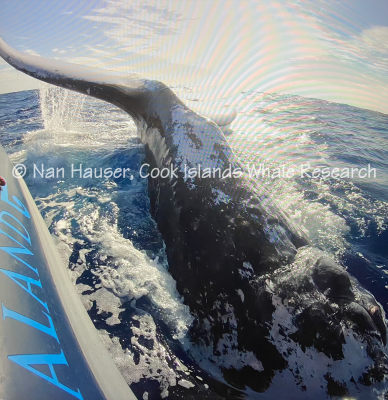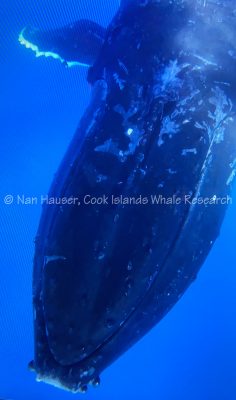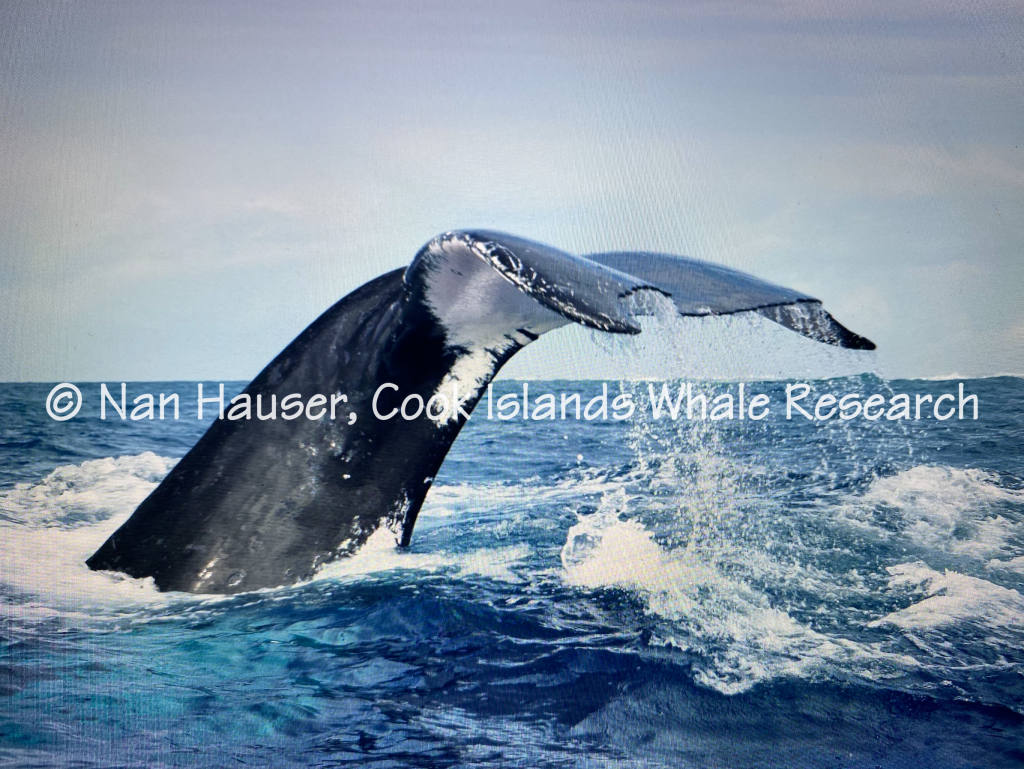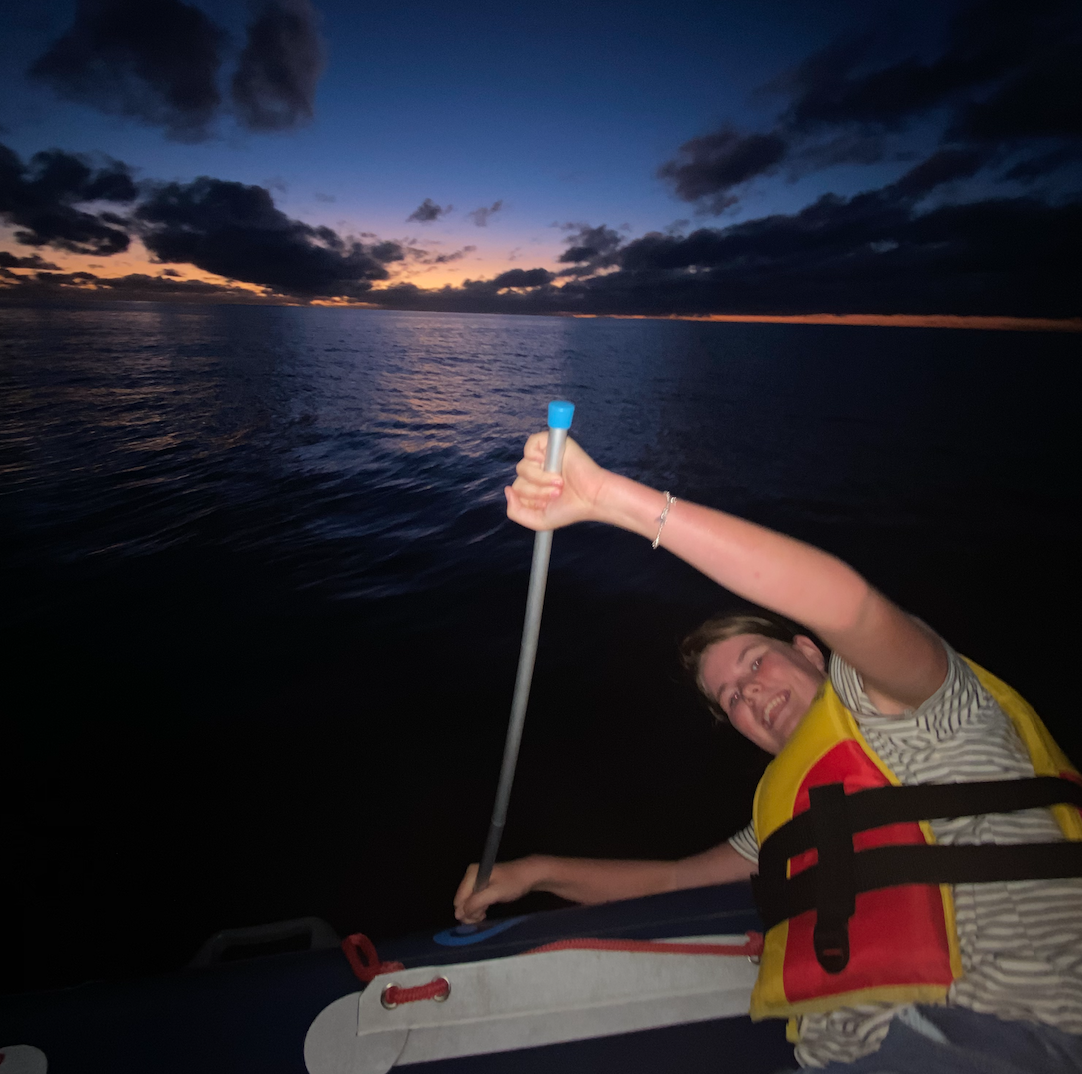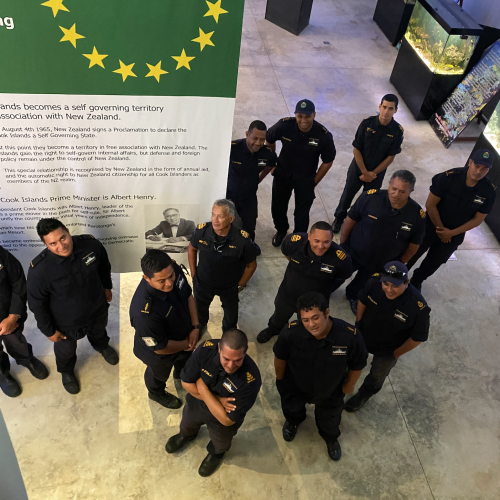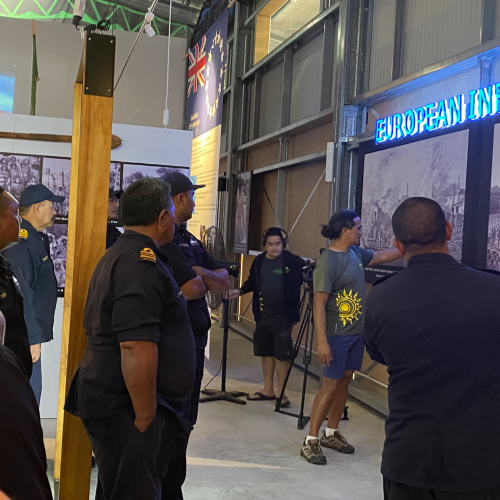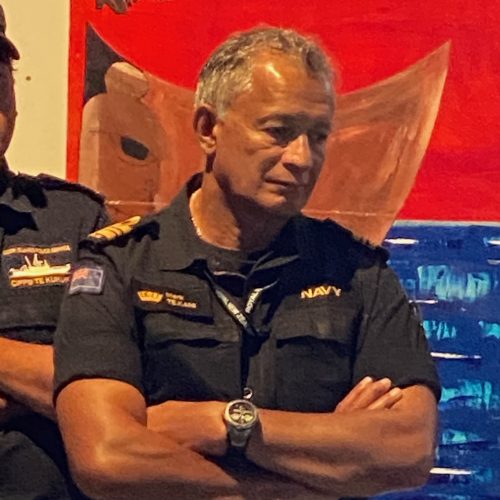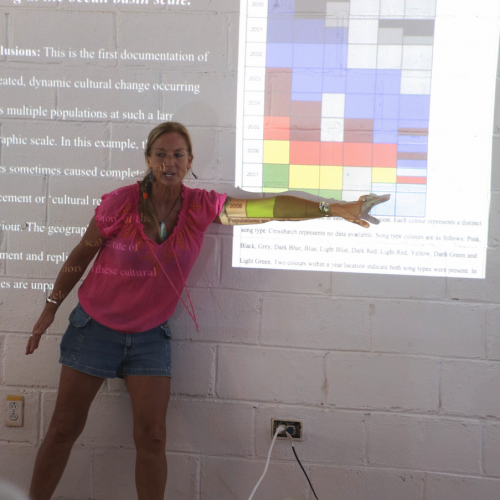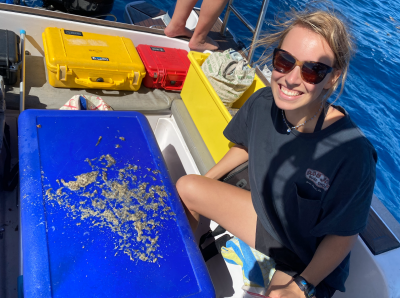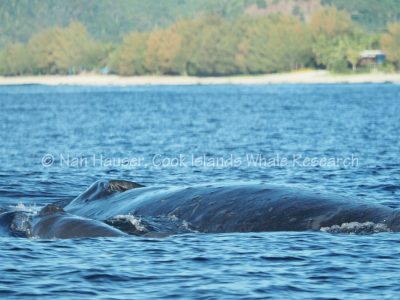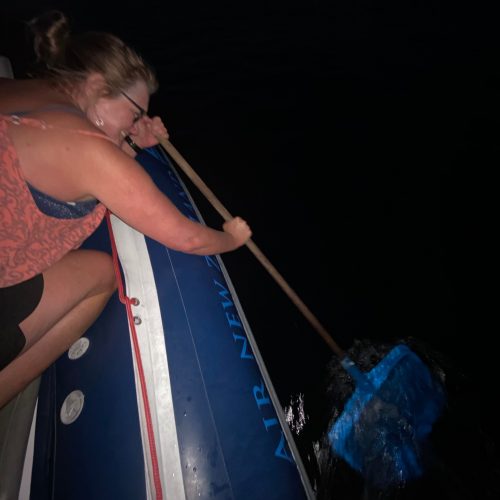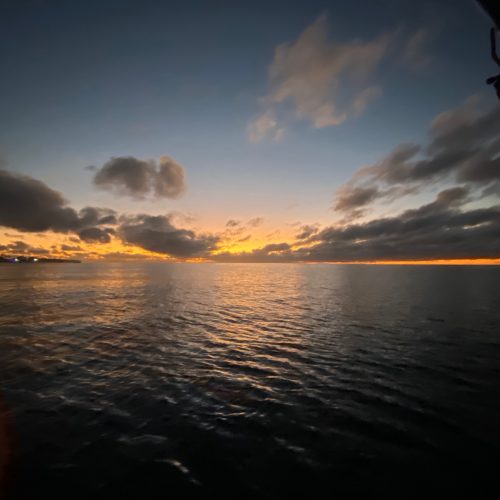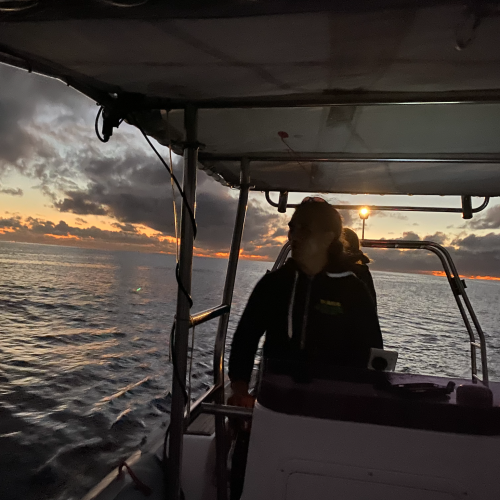31 August 2020
Whale season has suddenly picked up over the past couple of weeks! After a slow start to the season, we can hardly go anywhere without seeing whales anymore!
On Saturday, August 22nd, Nan, Stan, and Katie spent the whole day driving around the island looking for whales from shore, since the sea ended up being rougher than expected. The whales tend to stick close to the reef in Rarotonga, so it’s not hard to spot them from land! We received reports from Mark and Shannon Harris in the afternoon of a mother and calf off their house in Arorangi. The calf was tail slapping repeatedly, and they could easily hear it from shore! As the mother and calf began traveling anticlockwise around the island, we caught up with them by Arorangi Wharf.
This was a beautiful, light-colored calf with a very white belly. The calf looked tiny compared to his mother! Nan estimated him to be around 3 weeks old, judging by the frequency of his breaths. He played around on top of his mother, who was carrying him carefully balanced on her head. She hung just below the surface of the water, so her baby could easily go up for a breath and come back down for a rest. The moment became even more beautiful when we noticed a group of spinner dolphins swimming around and bow riding the whales!
The team headed out on the water the next day to try and find this mother and calf again, and we ended up having a very exciting day at sea. After departing the harbour at 9:00, we hardly had a moment without whales! We quickly found a pair of adults just off Vaiana’s Bar & Bistro and an adult and juvenile pair off the Sea Wall, which were reported by fishermen in the morning. After getting some fluke shots and DNA samples from these animals, we continued on, determined to find the mother and calf.
It didn’t take long to spot the gorgeous white baby breaching off Crown Beach Resort! We were thrilled to find this mother and calf again and collect sloughed skin samples from them both. Nan was surprised by this calf’s motor skills at such a young age! He displayed all sorts of surface activity, such as breaching and pec slapping, which was impressive for such a young animal.


